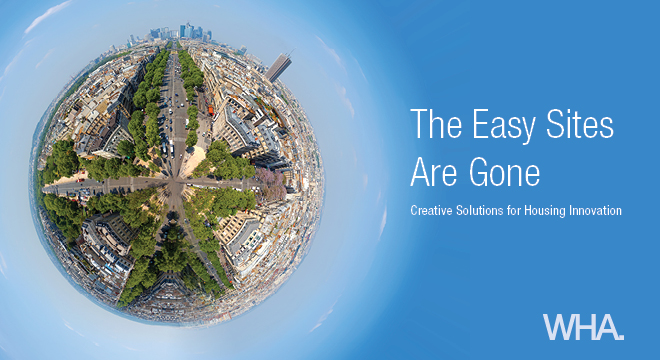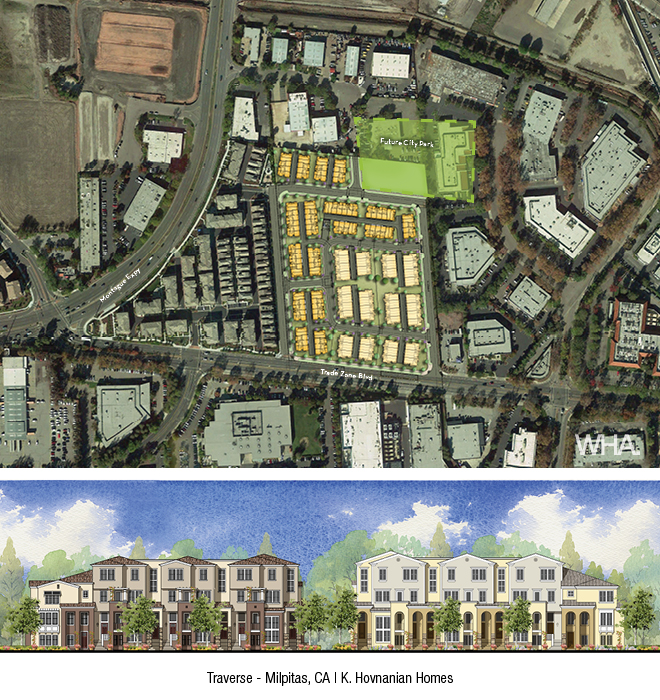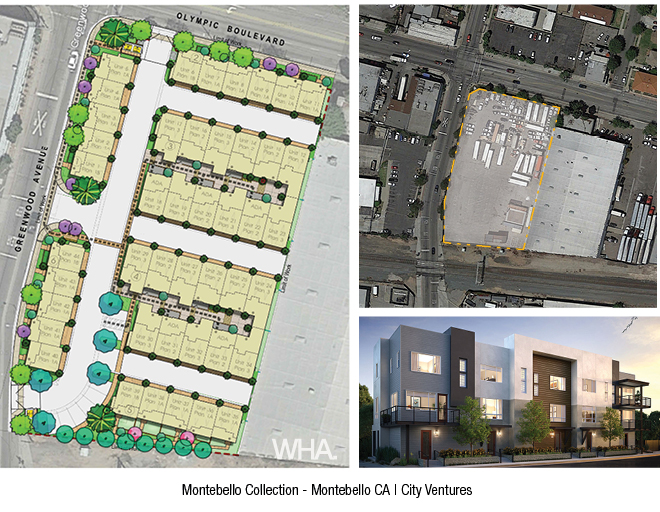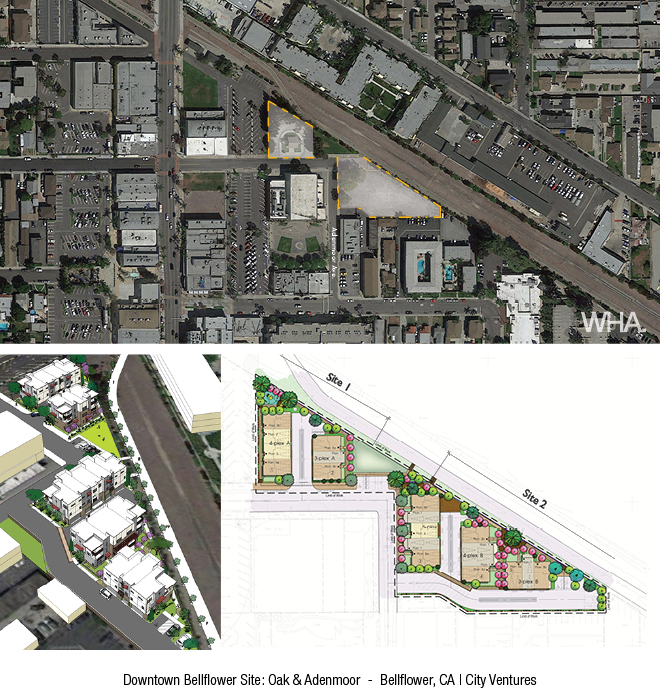The Easy Sites Are All Gone!

Let’s face it, the easy sites are all gone. We are left with the remnants – irregular shaped, topographically challenged, limited access, penned in by crowded roads with numerous constraints imposed by NIMBYs, difficult adjacencies like railroads or freeways, entitlement requirements, utilities, and environmental challenges such as sea-level rise or oil wells.
A one-size-fits-all approach is fast becoming a thing of the past in all but the most suburban of developments. But with unbearable commutes, those seeking a quality life are increasingly desiring close-in locations near work, services, family, and institutions important to them. Many consumers may be willing to accept a smaller home, but one that is rich with amenities either on-site or nearby, in walkable locations that are transit-convenient. This consumer type is fueling the search for available urban land.
This leads us to previously overlooked properties close to established urban centers, often in areas that are devoid of residential uses characterized by older, underused or vacant retail and industrial uses. These challenging sites often require environmental cleanup and lack walkable retail, services, and especially parks, triggering complex ways to establish these uses for redevelopment. Without California’s Redevelopment Agencies, terminated during the Great Recession by Governor Brown, finding ways to pay for these uses, especially parks, is difficult. Private open spaces are essential but do not fulfill the need for bonafide park space. At Traverse, our urban townhome project on former industrial land in Milpitas near San Jose, our site contributed land that amounted to a quarter of an eventual city park. Once adjacent parcels are redeveloped, the park will be completed.

Cities, looking for high-quality design have often developed rigid paint-by-the-numbers approaches to development that may not fit current financially-feasible development models. We need to aim high while meeting reasonable objectives and work with city leaders to provide flexibility and quality.
In order to meet these challenges, innovative solutions are required. Widening streets and freeways through existing development is costly or impractical or results in radical destruction and disruption of existing patterns. Parking is a particular issue: some cities recognize that traffic impacts must be dealt with by reducing parking to encourage transit usage, while others continue to demand sometimes unreasonably high parking ratios. Current trends toward the reduction in auto dependency will push this topic to the forefront in the next few years, but until such time, we must look for creative solutions and bridging solutions that can evolve with time. Fire departments that purchased large equipment in recent years have become a real issue in infill development. Greater setbacks, separations and turning radii are required to facilitate the fire apparatus. Over time, we need to encourage right-size fire equipment for the environments they serve.
Maximizing open space is another criterion that requires attention. The clever use of limited space is critical to creating an extension of the living environment for smaller units. “Leftover” spaces can go to the dogs in the development of creative dog pocket parks – several great examples are in Playa Vista in Los Angeles.


Finally, to optimize density, it takes a creative approach to unit design and building compositions that maximize space and minimize footprints simultaneously. This involves the purposeful programming of flexible space, flexible thinking about parking, creating activity zones to encourage social interaction, and breaking open the box with fenestration and height. Use of creative storage and adaptable furniture can transform an office into a bedroom. Maximization of private open space through the use of panoramic doors and roof terraces can enhance zero-lot or small-lot solutions. The City of Bellflower, California should be commended for their innovative approach to density. In calculating density on a recent project, the site yielded 7.85 maximum units. Normally, that would equal 7 permitted units. Their approach provided an additional 0.15 unit IF you could satisfy a shopping list of bonus points with increased design and quality standards over what would be considered “normal”. It is a win-win situation and we all need more wins.

The City of Los Angeles approved their Adaptive Reuse Ordinance in 1999 helping to fuel the renaissance of the city center by creating an expedited approval process that exempting older and historic properties from many of the zoning requirements of new buildings (such as parking). This has created several thousand new housing units with thousands more in the pipeline preserving a historic fabric and generating a revitalization of retail and restaurants in the area. In fact, the best performing Ralph’s supermarket is in downtown Los Angeles now joined by Whole Foods, in a place where there was no grocery store just a decade ago.
The easy sites are all gone, but with creative thinking, some of the best solutions are yet to come.




Leave a Reply